 |
SRGC Bulb Log Diary |
| Home Recommend This Site To A Friend |
|
BULB LOG 22 24th May 2004 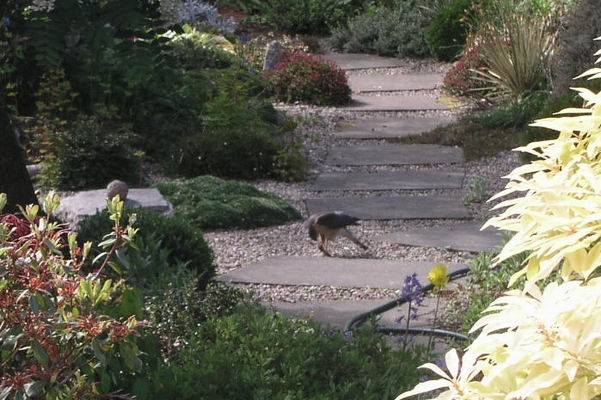 Sparrow hawk. Log 21 finished with the pests (mice) this week I start with a predator, the sparrow hawk. While it is eating a chaffinch here they have occasionally eaten mice in our garden. 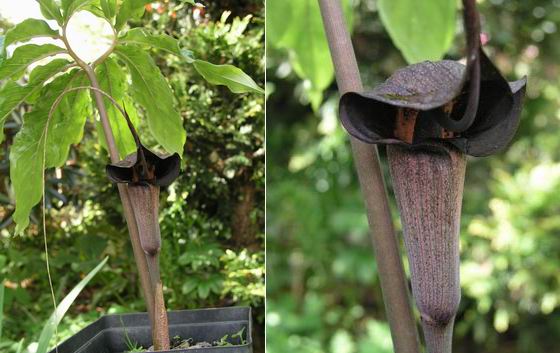 Arisaema thunbergii urashima. Two Arisaema species new to us this year - Maggi succumbed to temptation when she saw the fat corms on the Edrom Nursery stall at the Edinburgh Show. Arisaema thunbergii urashima has a nice short stem with a dramatic dark coloured flower topped by a circle of leaflets. 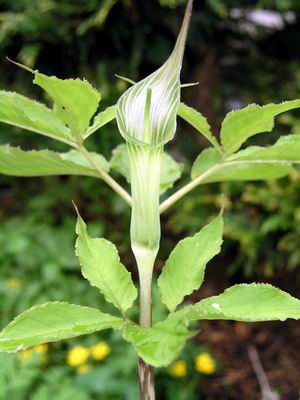 Arisaema maximowiczii. A taller flower stem places the flower so it is framed by the leaves on Arisaema maximowiczii. Last July when we were repotting I decided to try Frit pingwuensis in a clay pot in the Frit house instead of a plastic pot in the frame. I thought that the growing conditions under glass might mean that we would get some seed from this Chinese species which, while it has flowered, has been slow to increase. 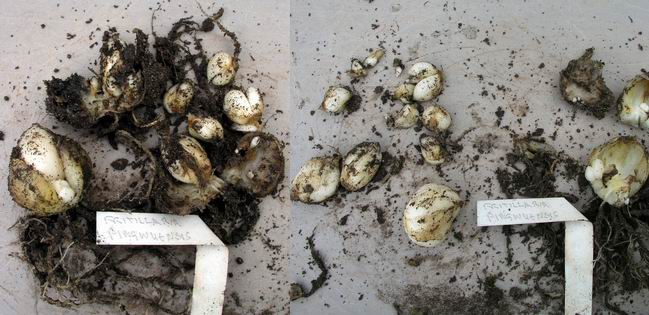 Frit pingwuensis Well, the result, while not disastrous, was not a big success either, or was it? No growth appeared above ground this year so, this week, I tipped the pot out to find that the bulbs had gone into what I call 'survival mode'. This is where the bulb makes few or no roots and a new bulb forms inside the old scales. You can see the new white bulbs forming inside the old scales on the left hand picture, I have separated them in the right hand picture with the new bulbs on the left. I started with three bulbs and now I have eight reasonable sized bulbs plus quite a lot of bulb grains. The reason I separated them is because the old scales are very wet and will start to rot soon and this could transfer to the new bulb - then I could lose the lot. The new bulbs are now back in a plastic pot in the outside frame where they will get the moist summer conditions they obviously need. 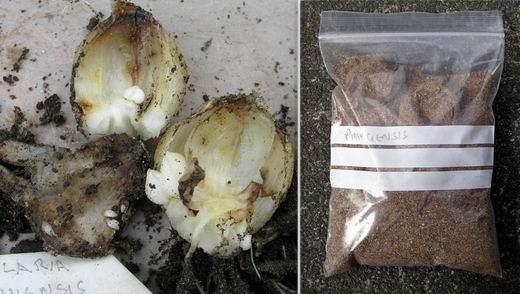 Frit pingwuensis bagged. However the old scales could still yield more small bulbils, so I have placed them in the fridge in a bag with dry sand (the scales contain all the moisture they require) and I will report the results in a future log. In all the years that we have been growing bulbs no two seasons have been the same and this year I think that many of the frits have gone back quicker then ever before - due to the cold damp weather when they were in flower which prevented them from setting seed. 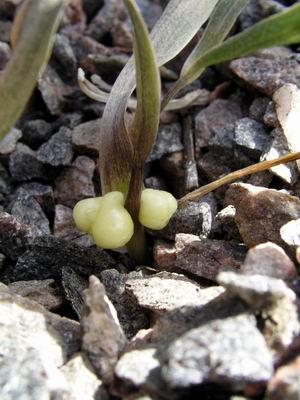 Frit aurea stem bulbs. Strange seasons also produce strange results - I have never found stem bulbils on Frit aurea before. 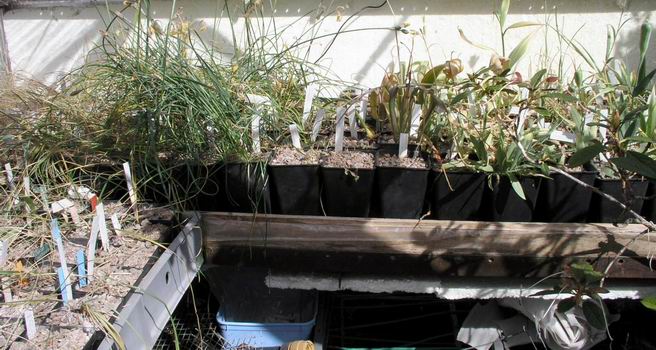 Gothenberg annexe. In the Gothenberg annexe all the bulbs are grown in plastic pots - these require very careful watering especially when the bulbs are going back. Once the bulbs have stopped growing the compost stays wet for a very long time so it is very unlikely that I will water them again before they are repotted. 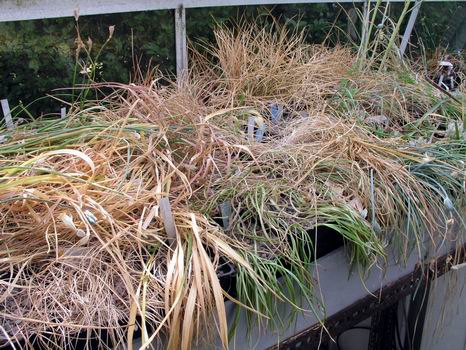 Bulb house 22.05.04. A similar scene and regime of withholding water in the Bulb house where I am also checking daily for ripening seed, especially on Crocus and Narcissus. 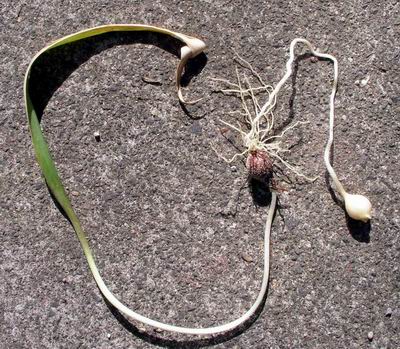 Tulipa stolons. Quite a lot of bulbs increase themselves by stolons and Tulipa bithynica is one. This small bulb escaped from its pot by a stolon into the plunge last year and now it is forming a stolon as well. 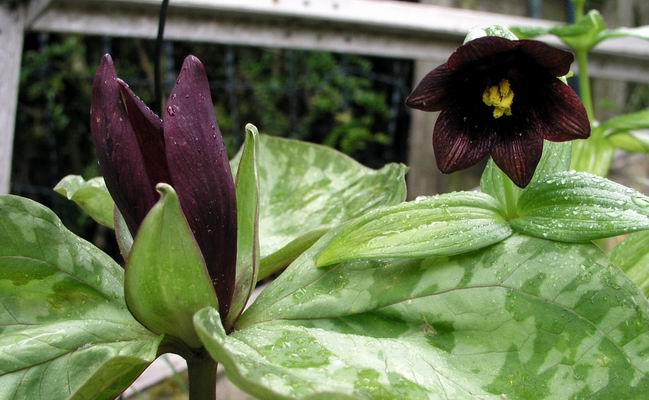 Colour coordinated. My eye was taken by an interesting colour coordinated juxtaposition in a frame with Trillium chloropetalum and frit camschatensis. 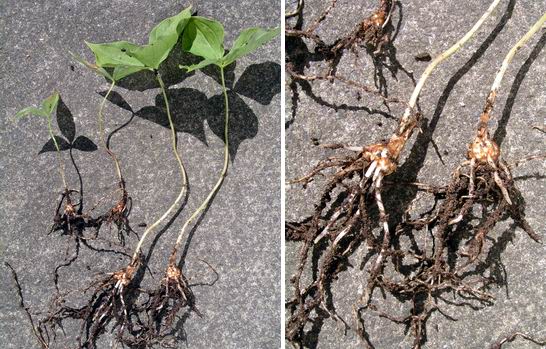 Trillium roots I believe that now is the best time to repot or to lift and split trilliums, just as the flowers are going past. The reason for this can be seen in the picture which shows the new fat white roots that will support the plant through next years growth emerging before the old roots and foliage has died down. I think it is much better to risk a bit of damage to the old foliage than to risk damaging the new roots - if you handle them carefully you will do no harm at all. 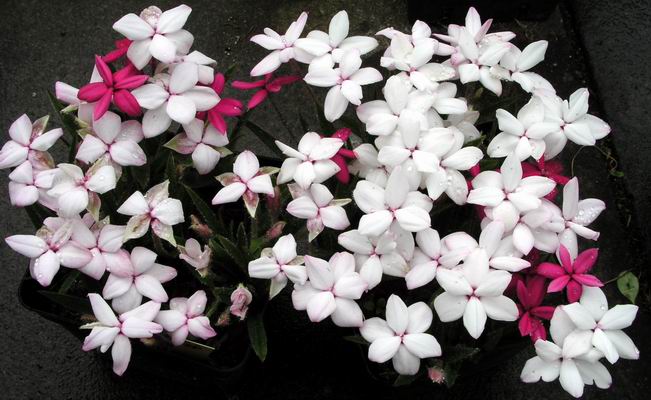 Rhodohypoxis. I will leave you this week with the first of our Rhodohypoxis to flower. ^ back to the top ^ |